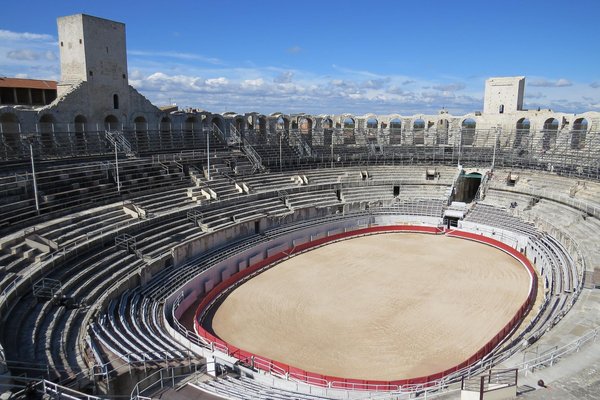France
Arles
Arles, Roman and Romanesque Monuments, represents the evolution of a classical Roman settlement into an important medieval city.
It has retained impressive Roman monuments dating back to the first century BCE, such as the Arena, the Theater and the Cryptoporticus. A second flowering period was in the fourth century CE, when the Thermae of Constantine and the Alyscamps necropolis were added. The Alyscamps stayed in use til the 13th century when the town blossomed again and gained fine Romanesque monuments such as the Church of St. Trophime.
Community Perspective: The city overall is nice to visit and the major sights are the Amphitheatre, the Alyscamps and the Church of St. Trophime. Hubert has written a comprehensive overview.
Site Info
Official Information
- Full Name
- Arles, Roman and Romanesque Monuments (ID: 164)
- Country
- France
- Status
-
Inscribed 1981
Site history
History of Arles
- 2006: Name change
- From "Roman and Romanesque Monuments of Arles" to "Arles, Roman and Romanesque Monuments"
- 1981: Inscribed
- Inscribed
- Type
- Cultural
- Criteria
- ii
- iv
Links
- UNESCO
- whc.unesco.org
- Official
-
- arlestourisme.com — Arles Tourisme
- Related
-
- museonarlaten.fr — Official website of the Museon Arlaten
- livius.org — Arelate - by Livius, Articles on Ancient History
All Links
UNESCO.org
- whc.unesco.org — whc.unesco.org/
Official Website
- arlestourisme.com — Arles Tourisme
Related Resources
- museonarlaten.fr — Official website of the Museon Arlaten
- livius.org — Arelate - by Livius, Articles on Ancient History
News Article
- July 11, 2015 english.rfi.fr — Rare ancient Roman frescos found in Arles
- May 14, 2008 news.yahoo.com — Marble bust of an aging Caesar discovered in the Rhone River near Arles, that could be the oldest known and is tentatively dated to 46 B.C
Community Information
- Community Category
- Archaeological site: Ancient Rome
- Urban landscape: Medieval European
Travel Information
Exact locations inscribed twice (or more)
Provence hotspot
Recent Connections
-
Perfect Inscriptions
1981 -
Alexandre Dumas
In his work "Nouvelles impressions de v… -
Depicted in Mizielinska Maps
AmphitheatreSee i.pinimg.com
Connections of Arles
- Individual People
-
-
Alexandre Dumas
In his work "Nouvelles impressions de voyage: le Midi de la France", Dumas recounts his visits to Fontainebleau, Lyon, Orange and its Roman vestiges, Avignon, the Pont du Gard and Arles.
-
- Geography
-
-
River deltas
The city of Arles is situated at the beginning of the Rhone delta -
Rhone
-
- Trivia
-
-
Depicted in Mizielinska Maps
AmphitheatreSee i.pinimg.com
-
In Video Games
A Plague Tale: Requiem features Arles Amphitheatre circa 1349. -
Moved from location of original construction
The Roman obelisk was originally erected in the 4th century in the center of the "spina" of the circus of Arles. After the Roman era, it was abandonned and fell down or was toppled and broke into two parts. Louis XIV had it placed at its present position in front of the town hall.
-
- History
-
-
Ancient Roman colonies
Iulia Paterna Sextanoum -
Located in a Former Capital
Capital of Kingdom of Arles (933-1378)
-
- Architecture
-
-
Designed by Jules Hardouin-Mansart
The town hall was rebuilt according to plans he drew in 1673 -
Romanesque
Saint Trophime's Church
-
- World Heritage Process
-
-
Extensions on Tentative List
Les villes antiques de la Narbonnaise et leur territoire: Nimes, Arles, Glanum, aqueducs, via Domitia -
Exact locations inscribed twice (or more)
Also part of 'Routes of Santiago de Compostela in France' -
Perfect Inscriptions
1981
-
- Religion and Belief
-
-
Religious Relics
Some parts of St. Anthony, in the Church of St. Trophime -
Christian Pilgrimage Sites
As part of Route of Santiago de Compostela
-
- Human Activity
- Constructions
-
-
Roman amphitheatres
Arles AmphitheatreSee en.wikipedia.org
-
Baths
Constantine's Baths -
Obelisk
The Obélisque d'Arles ("Arles Obelisk") is a 4th-century Roman obelisk, erected in the center of the Place de la République, in front of the town hall of Arles, France. (wiki)See en.wikipedia.org
-
Theatres and Opera Houses
Roman theatre -
Cryptoporticus
-
Necropolises
Roman necropolis Alyscamps
-
- WHS on Other Lists
-
-
European Capital of Culture
Marseille-Provence (2013)
-
- Timeline
-
-
Built in the 1st century BC
It has some impressive Roman monuments, of which the earliest - the arena, the Roman theatre and the cryptoporticus (subterranean galleries) - date back to the 1st century B.C. (AB)
-
- WHS Hotspots
-
-
Provence hotspot
Provence hotspot
-
News
- english.rfi.fr 07/11/2015
- Rare ancient Roman frescos found i…
- news.yahoo.com 05/14/2008
- Marble bust of an aging Caesar dis…
Recent Visitors
Visitors of Arles
- Adam Hancock
- Adolfo
- Adrian Turtschi
- Aitia
- Albert
- Alberto Rodriguez Gutierrez
- Alexander Barabanov
- Alexander Lehmann
- Alex Baranda
- alicemears
- ALS
- A. Mehmet Haksever
- Ammon Watkins
- AndreaTLV
- Argo
- ArnaudFilloux
- arnaugir
- Aspasia
- a.thum
- Atila Ege
- Aunti
- Badwater
- Bamse
- basementonline
- BaziFettehenne
- beckyjo27
- Bill Maurmann
- Bin
- Birgitte Sørensen
- bossc
- Bropyk
- CampbellME
- campmany
- Caspar
- CeeCeeSR
- chenboada
- chenqtao
- Cheryl
- ChrisN
- Christer Sundberg
- Christian Wagner
- Christoph
- Christravelblog
- Claire Bradshaw
- Clyde
- Cobaltrage
- Col
- Coppi
- Corinne Vail
- Cristina Erba
- Csaba Nováczky
- ctravel
- CugelVance
- Cyberczar
- CynthiaSam
- CynthiaW
- Dagmara
- Damientournay
- Dani Cyr
- Daniela Hohmann
- Daniel Chazad
- Daniel R-F
- Danny L
- Dan Pettigrew
- David Aaronson
- David Berlanda
- Delphine Delaunay
- Dennis Nicklaus
- Dimitar Krastev
- Dimitrios Polychronopoulos
- DL
- Dorejd
- DutchHorn
- Dwight Zehuan Xiao
- Echwel
- edstar500
- Els Slots
- Emilia
- erdsaumnaht
- Erfe91
- Eric Lurio
- Erik Jelinek
- Ertai
- Eva Kisgyorgy
- Evgenii
- fabi-ddorf
- Fam39
- Fan Yibo
- Farinelli
- Feldhase
- Felicité
- Femke Roos
- Fernweh
- Filippo Ubaldi
- finsbury_jo
- Fmaiolo@yahoo.com
- Francky D'Hoop
- FrankW
- FS
- Gary Arndt
- g.emma_bae
- George Gdanski
- GeorgeIng61
- GerhardM
- Gilles
- giloudepuertorico
- Gjert
- Hadrianus
- HaraldOest
- Harald T.
- Harry Mitsidis
- Hasco
- H Beswick
- Hubert
- Hughes1920
- Iain Jackson
- Ian Cade
- Ilya Burlak
- Ingemar Eriksson
- IreneKD
- Ivan
- Ivan Rucek
- Jakob F.
- Jana and Matt
- janem
- Janina Lehmann
- Jan-Willem
- Jarek Pokrzywnicki
- Jasam
- Javier
- Javier Coro
- Jawnbeary
- Jean Lecaillon
- Jeanne OGrady
- Jeffrey Chai
- Jens
- Jezza
- JobStopar
- Joel on the Road
- John Smaranda
- Jonas Kremer
- jonathanfr
- Joyce van Soest
- JR's HERITAGE SITES
- Juha Sjoeblom
- KarenBMoore
- Karito Vies
- Kbecq
- Ken DJ
- KentishTownRocks
- Kjlauer
- Klaus Freisinger
- Knut
- ko9757
- KoenigMarke
- Krijn
- krtek
- Krzysztof B
- Laetitia Yin
- Lara Adler
- Laurine
- LaVale
- Liamps91
- Loic Pedras
- Luboang
- Lucio
- Ludvan
- Luis Filipe Gaspar
- Maciej Gil
- Mahuhe
- Małgosia Łupicka
- Manuelfunk
- marcel staron
- marc Rouserez
- Marinemajor
- Martin
- Martina Rúčková
- Marty
- Matejicek
- Mathijs
- MAURO PODDA PANI
- MaxHeAnouBen
- MaYumin
- MH
- MichaelH
- Michael Novins
- Mikko
- Mikko Syrjä
- Milan Jirasek
- MMM
- Mohboh
- Monica Tasciotti
- MoPython
- Morodhi
- Mstrebl1990
- Naim Y
- nan
- Nasebaer
- Niall Sclater
- Nicolas
- Nihal Ege
- nikolasruffet
- NoahFranc
- opperpco3
- PabloNorte
- Patrik
- Paul Schofield
- Peltzi
- Persian Globetrotter
- PeterH
- Peter Lööv
- Philipp Leu
- Philipp Peterer
- phillipmeng
- Pieter Dijkshoorn
- pietprive06@kpnmail.nl
- Pink Bunny
- Piotr Wasil
- Potsdamer
- Purrfect
- Rachel Perkins
- Rahelka
- Ralf Regele
- Randi Thomsen
- Reisedachs
- Reza
- RJPTravel
- RobRos
- Roccobot
- Roel Sterken
- Roger Enarsson
- Roger Ourset
- Roman Bruehwiler
- Roman Raab
- Sabrina Liebehentschel
- Sandmann15
- Sclowitz
- Sergio Arjona
- Shandos Cleaver
- Shijie ZHU
- sibariam
- sime147
- Simonf
- Simonh
- SirLoydd
- Slavi
- Solivagant
- Sorel Americo
- Squiffy
- Stanislaw Warwas
- Stefan A. Michelfeit
- Stefan Loov
- stephanvermeulen
- Stijn
- Svein Elias
- Szucs Tamas
- Tammy Gouldstone
- Taotao Chen
- Tarquinio_Superbo
- Tcchang0825
- Ted Coombs
- Tevity
- Thomas Buechler
- Thomas van der Walt
- Tim Allen
- Tinamu
- Tom Flaten
- Tonisan
- tony0001
- Traveling Girl
- triath
- Truls Brekke
- Tsunami
- ValiaVeweth
- Vanessa Buechler
- Viaje al Patrimonio
- Vincent Cheung
- V&M
- voyager
- WalGra
- Walter
- Westwards
- WILLIAM RICH
- Wojciech Fedoruk
- Wo_ko
- wrung24
- Xander Huang
- Xiquinho Silva
- Yongcheng Liu
- Zach
- Zhenjun Liu
- Zoë Sheng
Community Reviews
Show full reviews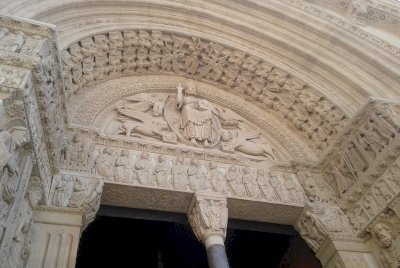
After my second visit to Arles, I can say that I have visited all the inscribed structures and now I fully understand its OUV: (1) Amphitheatre – very impressive, and I enjoyed also exploration of the interior. (2) Antic Theatre – quite nice, but go to Orange if you want to see the well-preserved Roman theatre. (3) S Trophime cathedral and its adjacent cloister – this was my highlight. The main portal is simply masterpiece! (4) Alyscamps with S Honorat church – though tombs are not such elaborated as they are in Ravenna, I liked this burial site for its delicate atmosphere. (5) Cryptoporticus and former Roman Forum – what remained is just vast corridors in the underground, but as it was almost 45 degrees outside in June 2019 it was very refreshing visit! (6) Thermes de Constantin – this is former public baths with collapse ceiling but with several fine details. (7) Ramparts – there are few remnants of former Roman fortification between the Theatre and the Alyscamps area.
Keep reading 0 comments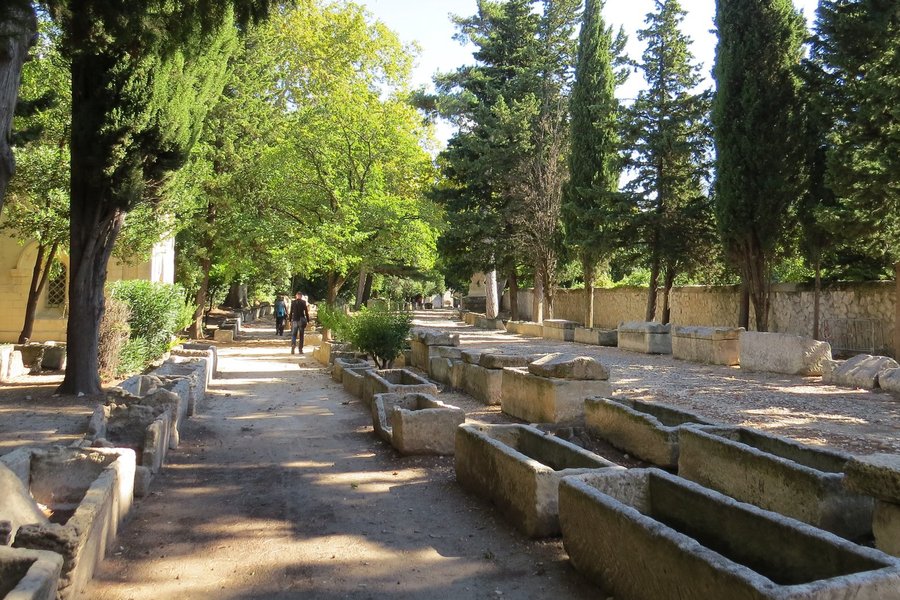
To most people, Arles seems to be best known for its association with Van Gogh, but of course, for those with an interest in ancient and medieval history, the city has much more to offer. The Amphitheatre is a massive and very impressive building that hosted gladiator fights for many centuries, and is today used for plays, concerts, and the French variant of bullfighting. The Church of St. Trophime, a former cathedral, features great Romanesque sculptures at the front side and also includes a cloister that is one the finest and best preserved anywhere. The Cryptoporticus, built as a foundation for the forum, is a huge underground space that provides pleasant shade and cool temperatures on a hot summer day. Other parts of the sites are the Roman theatre, the Thermal Baths of Constantine, and the interesting Alyscamps necropolis (meaning “Elysian Fields” in Occitan), which features many ancient sarcophagi and is also included in the Routes of Santiago listing, as the medieval Church of St. Honorat was a popular gathering point for pilgrims. There are not many places outside of Italy where so many Roman monuments can be found so close together, and in such high quality – but of course, the entire region, with Orange, Nimes and the Pont du Gard, is a true Roman hotspot.
Keep reading 0 comments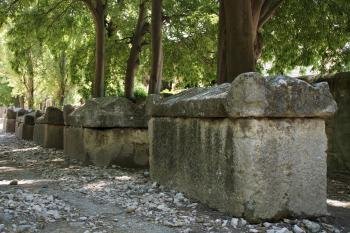
Arles has been inscribed for both its Roman and Romanesque remains. The city is a „good example of the adaptation of an ancient city to medieval European civilization“ (from the Advisory Board Evaluation). This can still be seen at the amphitheatre. After the fall of the Roman Empire, it was transformed into a fortress with houses and chapels inside of the arena. In the 19th century the amphitheatre was rebuilt in its original form and the later additions were removed, with the exception of three medieval towers that protrude from the upper tier. The amphitheatre has recently been refurbished and appears again in bright white. It was fun to climb on the upper tier of the arena (surprisingly there was no fence or barrier), with nice views to the surrounding houses and the narrow and winding streets of the old town centre.
The other Roman remains in the town centre are less striking: the Roman theatre has suffered substantial damage, only two Corinthian columns, the Orchestra and a few terraces for the spectators are preserved. Further: the Roman forum (only two columns and a part of the cornice, now part of the façade of a hotel), the Therms of Constantine, and the remains of the Roman ramparts. Worth seeing is the Cryptoporticus, an underground vaulted gallery once constructed to support the Roman forum. The entrance is in the hall of the Hôtel de Ville.
The most important Romanesque site is the Church of Saint Trophime. The church is famous for …
Keep reading 0 comments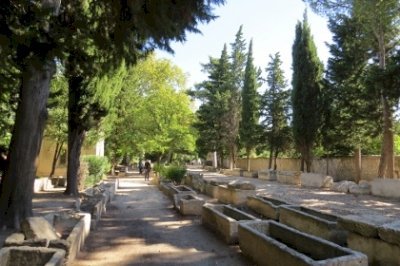
Arles is a more lively town than the similar Orange. Extremely touristy too, especially the area around the amphitheater. This Roman building occupies a central space in town worthy of a cathedral. It's still in use as a bull ring. The nearby Roman theatre holds not much more than remains.
Closeby (and signposted) lies the most important romanesque monument of Arles: the Church of St. Trophime. Its exterior decoration is excellent. Inside mainly the huge tapestries draw the attention. Somehow I missed the entrance to the cloisters, which are said to be rich in carvings too.
Finally, I walked south to the cemetery of Les Alyscamps. I had my backpack with me (including electronics such as a laptop and Kindle) as a was on my way to the airport in Marseille. I was a bit worried roaming around a desolate necropolis with all my valuables, but Les Alyscamps proved to be almost as touristy as the rest of Arles. It's a nice place for a stroll though, and peek into the old church that now is the domain of numerous pigeons.
Keep reading 0 comments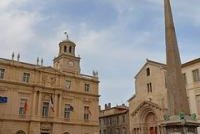
I visited this WHS in May 2012. Although the Roman arena was the highlight of my visit, still I felt Arles had seen better days and now was pretty much neglected. It was quite dirty and the whole place didn't feel very safe in general. Nearby Nimes, is not a WHS but its Roman arena and other remains are better kept and looked after and overall the city has much more to offer.
Keep reading 0 comments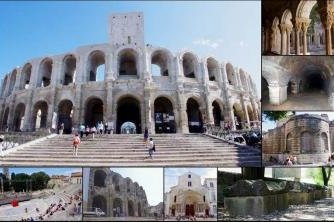
The historic site of Arles comprises several building and monuments however the best ones are the Roman theatre and the Arenas that have been well conserved until today. The theatre, conversely from the one in Orange, has lost its stage and its facade a long time ago. Only the tier is still in place. The Arenas still offer a tremendous testimony of the Roman life and compose with the Pont du Gard and the Orange Theatre the greatest Roman remains in France. A renovation campaign has begun several months ago and will allow to maintain the beauty of the site for a long time.
If you have the time, give a look to the Triumphal Arch and the different Roman and Romanesque monuments of the historic center.
Keep reading 0 comments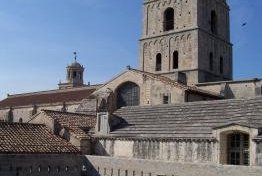
I had a really nice day in Arles late September 2006. Probably the most famous site is the Roman Amphitheatre, and this is a good site to start off with, it is impressive but not the best example of its kind, perhaps even the one in nearby Nimes is better preserved. It is still in use however and there are regular bull-fights here, in what is the bullfighting capital of France.
One Roman site that is well worth getting to though is les Alychamps, it is a short ten minute walk south from the centre. It was originally a roman cemetery and became one of the earliest Christian sites in France as it was the place for clandestine meetings. The church of St Honorat is at the end of the cemetery and this is included in the Route to Santiago de Compestella WHS of which Arles was one of the four starting points in France so it is quite an important aspect of the inscription also it provides two WHS for the price of one! This was perhaps my favourite part of Arles, the church was empty and had a real eerie feel. Other major roman remains are the Theatre, which is nice but nothing spectacular, the crypts (they were closed when I visited in 2006) the baths which I didn’t get to see.
The Romanesque buildings are dotted around the centre, the major point though is the Cathedral of St Trophime (pictured). It boasts one of the most impressive …
Keep reading 0 comments
In our trip to France we have visited the beautiful town of Arles. The most important monument is the amphitheatre, with two storeys and Doric arcades, very well preserved because in the Medieval times it became a fort: from that remain three medieval towers. Beautiful are the remains of the Roman theatre, with the steps, the orchestra and the two high columns; it had three storeys of arches, like you can see from the part of it that is included in the walls. The cryptoportica (subterranean galleries) were used to stabilize the Forum (of which you can see two columns of a temple on the overlooking Forum Square) and as a deposit of grain; it has a horseshoe form and big pillars and arches. Near that are the impressive remains of two rooms (tepidarium and calidarium) with an apse of the Constantine Baths, the Roman exedra, that was part of a basilica, and the Roman walls with the Gate of the Cavalry. The Cathedral of St. Trophime, that was also with Les Alyscamps one of the points of departure of the pilgrimage to Santiago de Compostela, is a masterpiece of the Romanesque architecture (only the chapels and the apse are Gothic and the transept is later) and has a stunning portal with statues relieves, columns, pilasters, capitals, cornices, lintels, tympanums and statues of lions. Inside there are three naves, the main with ogival vaulting, the lateral with barrel vaulting, tapestries and a early Christian sarcophagus. The same two types of …
Keep reading 0 comments
